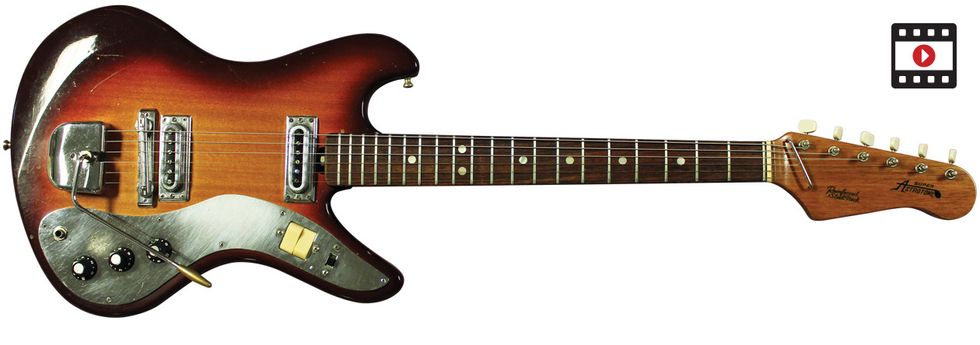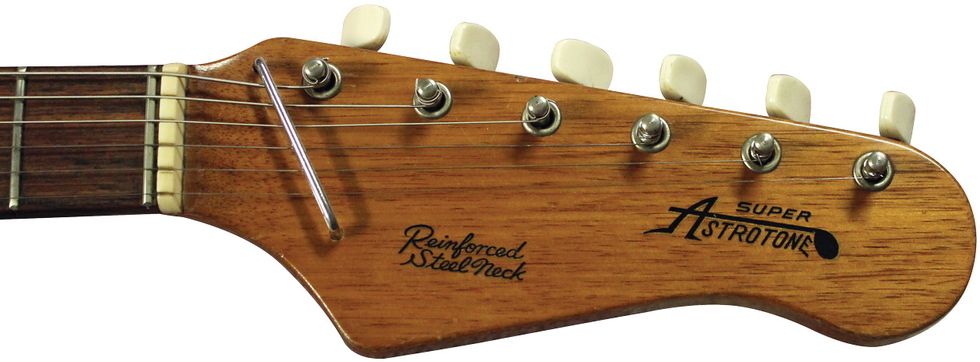
When my daughter was 5, she eagerly started to play the violin. Her first teacher taught music through the Suzuki method, which is a rather involved approach that required a lot of practicing, performing, and parental involvement. And darn, if she wasn’t the cutest little performer onstage!
Thankfully, my wife is a music teacher. The Suzuki method can be a little intense for some folks, and my wife took on most of the responsibility for our daughter’s progress. With that said, the Suzuki name also interested me because the founder of the method, Shinichi Suzuki, had a violin factory in the city of Nagoya, Japan.
I had visited the city a few times and knew it was quite the hub for guitar factories and companies located in and around the locale. Ibanez and Aria were there, along with a few instrument factories such as Sakai, Terada, Iida, and Kasuga. (Tip: Nagoya is also known to have a lot of restaurants that specialize in extremely awesome chicken wings.) Yes, food and guitars are a couple of my favorite things, so when trying to curb the urge to try out every chicken sauce in the city, I headed over to the Suzuki factory to visit the place where my daughter’s studies had originated.
I had some evidence that the Suzuki Violin Co. had ventured into the electric guitar frenzy of the 1960s. But it wasn’t until I spoke with some of the older employees at the factory that I learned the true scope of the company’s involvement. Suzuki made several different electric guitar models in the mid ’60s, but none were as cool as the Astrotone guitars of 1965 (Photo 1). I’ve had a few different Astrotone guitars—almost all of them found in California—but I always wondered where they came from. I knew they were made in Japan, of course, but it wasn’t until a trip to Nagoya that I figured it all out.
One of the coolest aspects of 1960s design in general is the fascination with space travel and science fiction, which led to plenty of interesting names, such as “Astrotone.” It’s like sound from space, right? Visually, the Astrotone guitars are sleek and balanced, and the workmanship is rather good. The neck profiles from almost all the Suzuki Violin Co. guitars feature a flattened “D” shape, which is unmistakable and unique. Since this was Suzuki’s initial foray into electric-guitar manufacturing, there are a few quirks present in many of the guitars, such as under-spec’d neck reinforcements, slightly off scale lengths, and a few wonky tuners here and there. But the proprietary tremolo units worked well, and the sound is total garage-rock, raw ’60s clang.

When I first started to write about the Astrotones, I discovered there were plenty of fans of these guitars who kindly shared photos of their versions. I also learned there were a few subtle, different versions and colors in the Astrotone line. White and baby blue examples—which were not common colors on Japanese electric guitars from the era—were found, along with variations of the name, such as “Super” Astrotone (Photo 2).
I was never able to determine the import company in the U.S. that sold the Astrotones, but I suspect it was the Marco Polo Company, which was led by a fellow named Harry Stewart. Either way, the Astrotone guitars are difficult to find these days, helped in part because Suzuki only made electric guitars for less than two years. Alas, my daughter’s violin studies lasted about as long, but she did transition to piano, flute, and, yes, guitar. As for me, I’m heading out to my local barbeque joint for some wings!
See and hear this mid-’60s Super Astrotone demoed by Mike Dugan.












![Rig Rundown: Russian Circles’ Mike Sullivan [2025]](https://www.premierguitar.com/media-library/youtube.jpg?id=62303631&width=1245&height=700&quality=70&coordinates=0%2C0%2C0%2C0)





